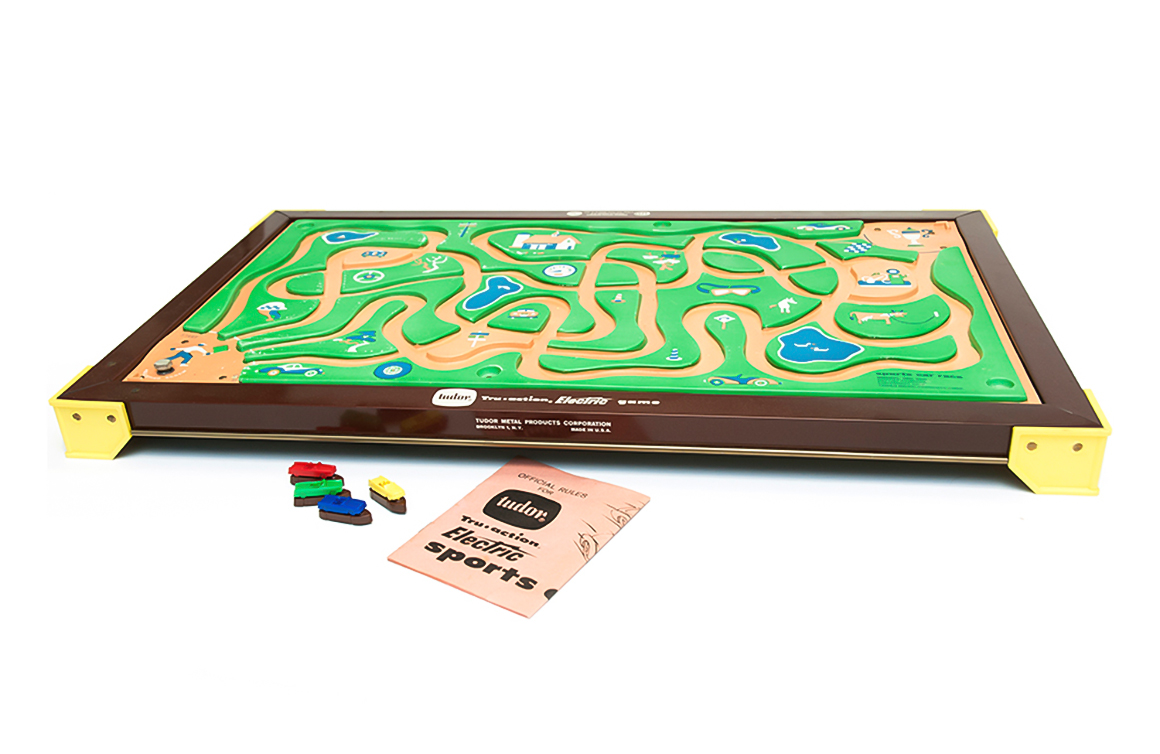Before the proliferation of handheld electronics and computer-based video games, there were the Tru-Action sports simulation tabletop games – powered by a rudimentary engineering concept: vibration. Over a forty-year period from the late 1940s through the 1980s, the Tudor Metal Products Corporation of Brooklyn, NY produced a variety of these sports-based toys, including baseball, basketball, horse racing, track & field, and, by far their most popular offering, football.
Regardless of the sport, each game operated in a similar fashion. When plugged in and turned on, a small electric motor attached to the bottom of the game board would vibrate the playing field. When the specially designed game pieces were placed on the board, they would move – often in unpredictable patterns. While in operation, the games also emitted a distinct buzzing sound that anyone who has ever played one of Tudor’s electric games is sure to remember.
Marketed to kids aged 6 and up, Tudor’s Electric Sports Car Race used a vacuum-formed plastic race course, complete with a series of intertwining “country roads”, to help propel the cars from start to finish. Each playing piece consisted of a painted plastic car (in red, green, blue, or yellow) on top of a brown plastic base. Some versions of the game included a black & white spinner that could be used to determine which player was assigned to which car.
Most of Tudor’s product offerings disappeared when Miggle Toys acquired the company in the 1980s. However, Electric Football has continued to have a cult following. As a testament to its continued popularity, in 2012, the Tudor Games brand was resurrected. Updated versions of football, soccer, and baseball continue to be sold today.
Note: If you buy something using the eBay link in this story, we may earn a small commission. Thank you for supporting independent toy journalism!

